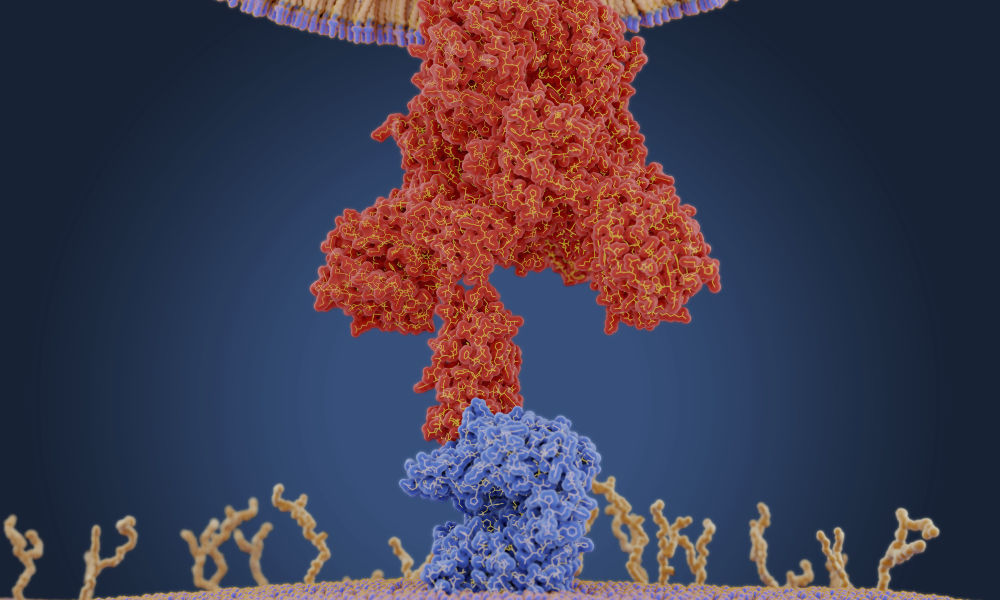FROM WIKIPEDIA.COM
Interferons (IFNs, /ˌɪntərˈfɪərɒn/[1]) are a group of signaling proteins[2] made and released by host cells in response to the presence of several viruses. In a typical scenario, a virus-infected cell will release interferons causing nearby cells to heighten their anti-viral defenses.
IFNs belong to the large class of proteins known as cytokines, molecules used for communication between cells to trigger the protective defenses of the immune system that help eradicate pathogens.[3] Interferons are named for their ability to "interfere" with viral replication[3] by protecting cells from virus infections. IFNs also have various other functions: they activate immune cells, such as natural killer cells and macrophages; they increase host defenses by up-regulating antigen presentation by virtue of increasing the expression of major histocompatibility complex (MHC) antigens. Certain symptoms of infections, such as fever, muscle pain and "flu-like symptoms", are also caused by the production of IFNs and other cytokines.
More than twenty distinct IFN genes and proteins have been identified in animals, including humans. They are typically divided among three classes: Type I IFN, Type II IFN, and Type III IFN. IFNs belonging to all three classes are important for fighting viral infections and for the regulation of the immune system.
---------------------------------------------------------------------------------------------------------------------------------------------
WHAT I HAVE LEARNED SO FAR.
An invading virus, like SARS-CoV-2, will quietly enter a host cell and connect with that cell's reproduction RNA. It then reproduces itself and enters the next cell. In the process of infecting a human, the virus will block host cells from creating interferon which signals the body's immune system.
When and If a host cell discovers it is being infected by a virus or bacteria, it creates a signalling protein known as interferon which in turn activates the immune system. Within the immune system is a cellular enzyme known as RNAseL, which finds and destroys the viral RNA inside the infected cell and stops that cell from reproducing. In effect it is like a shut off electric switch. The virus cannot replicate but neither does the human host cell. A good question is can we artificially create viral resistant stronger human cells faster than the virus can clone itself within human host cells?
If the SARS-CoV-2 is allowed to silently enter millions of human host cells because interferon is not signalling fast enough, and the immune system is not reacting fast enough, the consequences can be deadly. If the lung cells are infected and the immune system finally reacts to destroy the virus inside the cells, the ability of the lung cells to replicate is impaired and oxygenation, stops. When breathing is impaired the consequence is often death.
Gentle People:
I am not a research scientist or a doctor and I interpret what I have learned, or believe I have learned, from experts in their fields. If I later discover I was misinformed or on the wrong path, I will remove or change the information. You can follow many of those experts on my non-profit blog: human4us2.blogspot.com
Question?
Can scientists create a better and more responsive interferon or an artificial RNA that attaches itself to a corona virus and blocks the virus from entering and replicating itself inside a human cell?
 | |||||||||||
| Identifiers | |||||||||||
|---|---|---|---|---|---|---|---|---|---|---|---|
| Symbol | Interferons | ||||||||||
| Pfam | PF00143 | ||||||||||
| InterPro | IPR000471 | ||||||||||
| SMART | SM00076 | ||||||||||
| PROSITE | PDOC00225 | ||||||||||
| CATH | 1au1 | ||||||||||
| SCOPe | 1au1 / SUPFAM | ||||||||||
| CDD | cd00095 | ||||||||||
| |||||||||||
